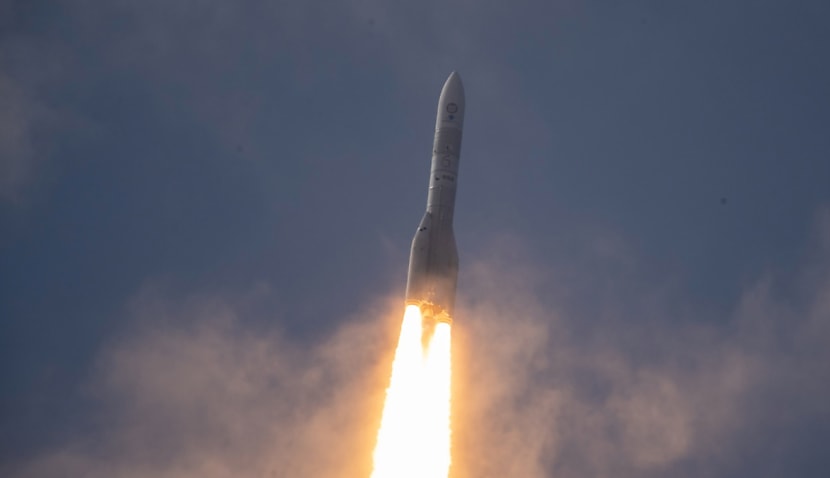
The vehicle launched from the Kourou site in French Guiana at 3:01pm Eastern (1901 UTC) on 9 July, and its triumph crucially means the space agency once again has a sovereign launch capability.
It comes after the previous model, Ariane 5, flew its final mission last year and follows years of delays to the high-profile project.
The ESA’s director general, Josef Aschbacher, hailed the lift-off as a “huge undertaking from thousands of people who have worked relentlessly for years”.
“A completely new rocket is not launched often, and success is far from guaranteed,” he said. “I am privileged to have witnessed this historic moment when Europe’s new generation of the Ariane family lifted off – successfully – effectively reinstating European access to space.”
The rocket was built by prime contractor ArianeGroup – a joint venture between Airbus and Safran – and is due for a second launch later this year. Already, 30 blast-offs have been ordered by clients, including Amazon’s internet-from-space initiative, Project Kuiper.
“This inaugural flight, designated VA262, is a demonstration flight whose aim is to show the capabilities and prowess of Ariane 6 in escaping Earth’s gravity and operating in space,” said the ESA. “Nevertheless, it had several passengers on board.
“At 17:06, a little over an hour after lift-off, the first set of satellites on board Ariane 6 were released from the upper stage and placed into an orbit 600 kilometres above Earth.
“Satellites and experiments from various space agencies, companies, research institutes, universities and young professionals were included on this inaugural flight.
“In addition to the rocket, the lift-off demonstrated the functioning of the launch pad and operations on the ground at Europe’s Spaceport. The new custom-built dedicated launch zone was built by France’s space agency CNES and allows for a faster turnover of Ariane launches.”
The launch was affected by a short delay due to a data acquisition system issue but was still hailed as performing “wonderfully” by Aschbacher.
Philippe Baptiste, CEO of CNES, added, “With this first successful launch by Ariane 6, Europe has finally recovered its capacity to access space.
“Europe can be proud of its space program; Europe can be proud of its knowledge and expertise. Together, let’s prepare the future of launchers and space.”

Adam Thorn
Adam is a journalist who has worked for more than 40 prestigious media brands in the UK and Australia. Since 2005, his varied career has included stints as a reporter, copy editor, feature writer and editor for publications as diverse as Fleet Street newspaper The Sunday Times, fashion bible Jones, media and marketing website Mumbrella as well as lifestyle magazines such as GQ, Woman’s Weekly, Men’s Health and Loaded. He joined Momentum Media in early 2020 and currently writes for Australian Aviation and World of Aviation.
Receive the latest developments and updates on Australia’s space industry direct to your inbox. Subscribe today to Space Connect here.












